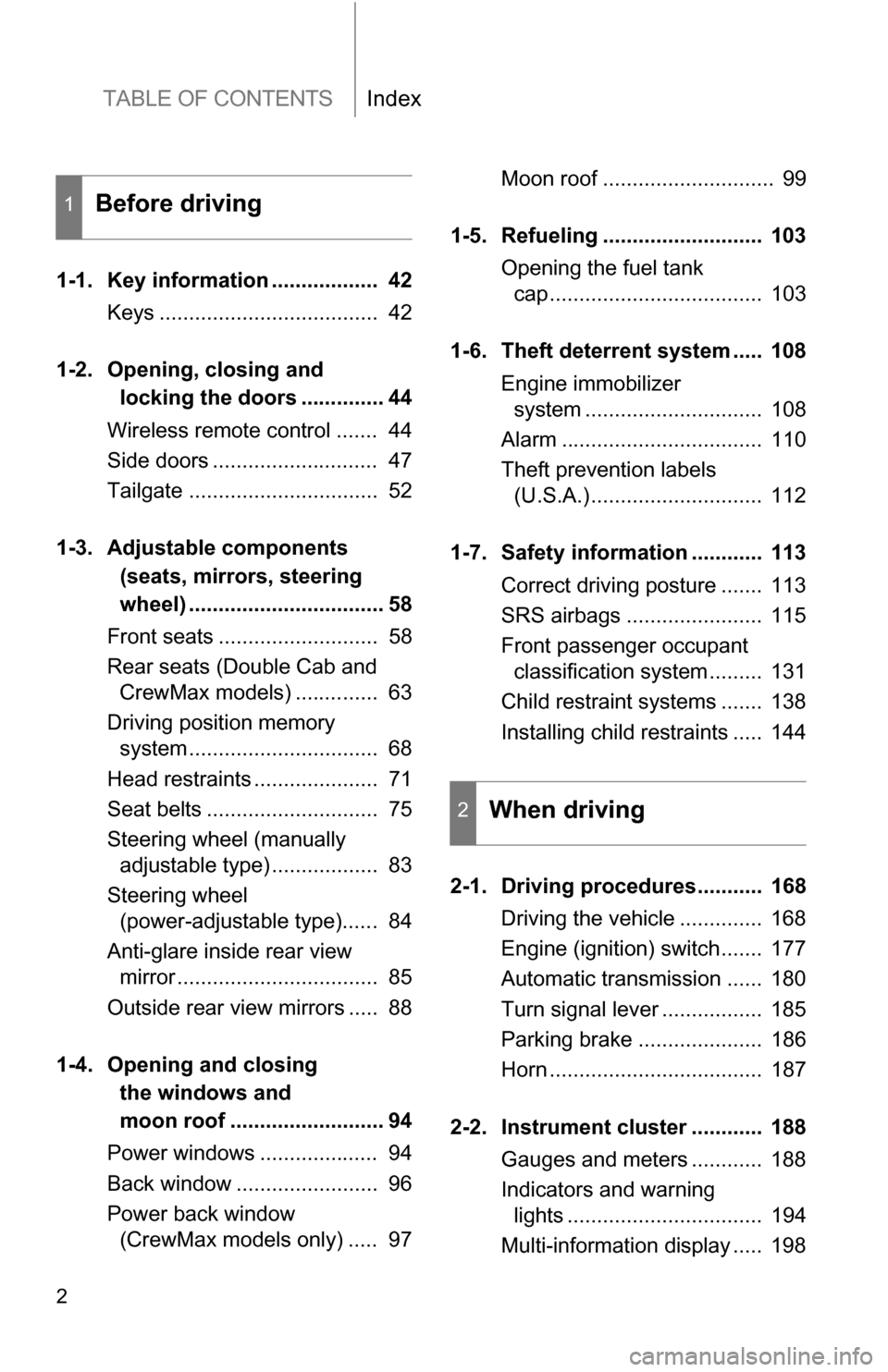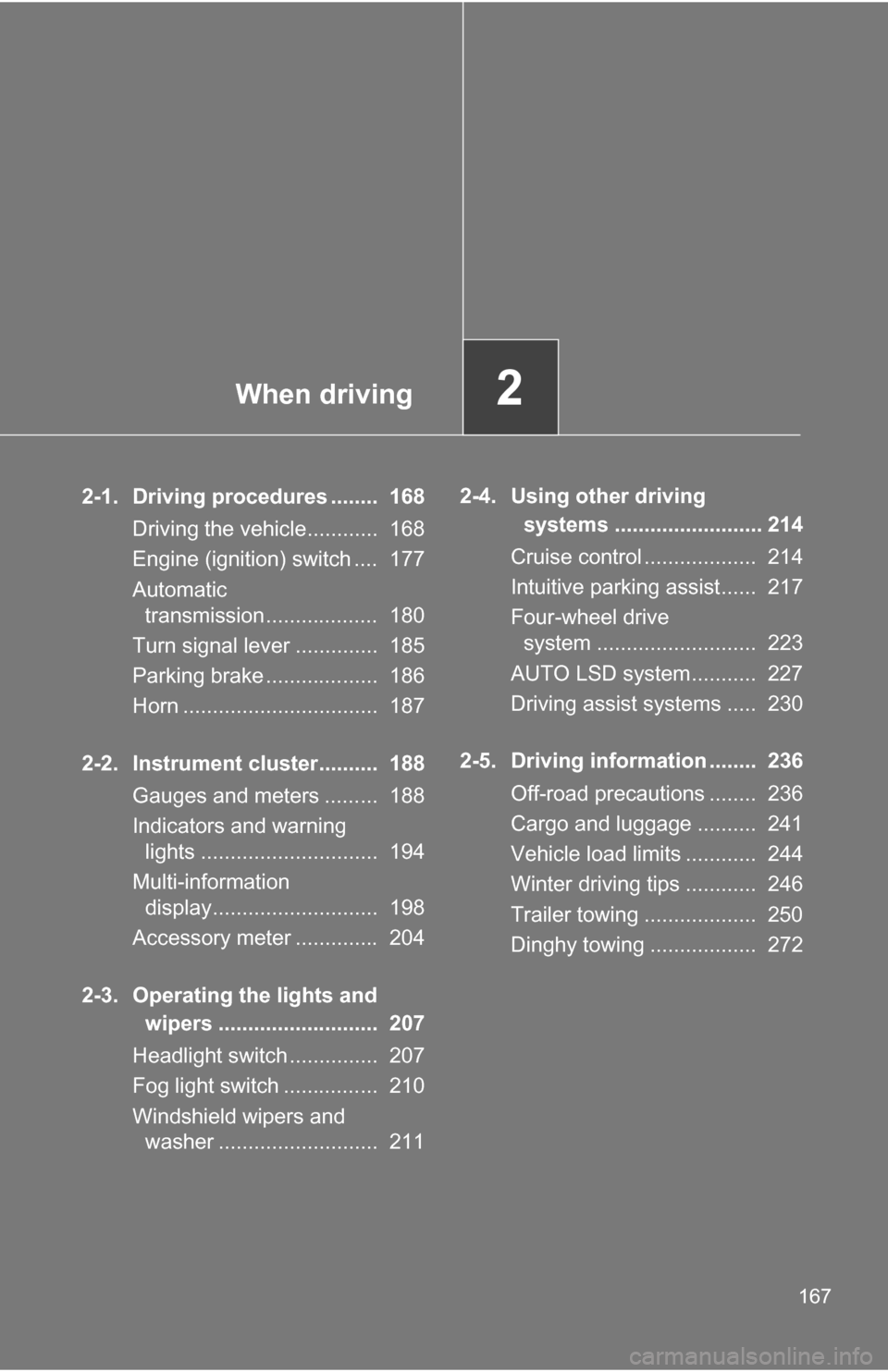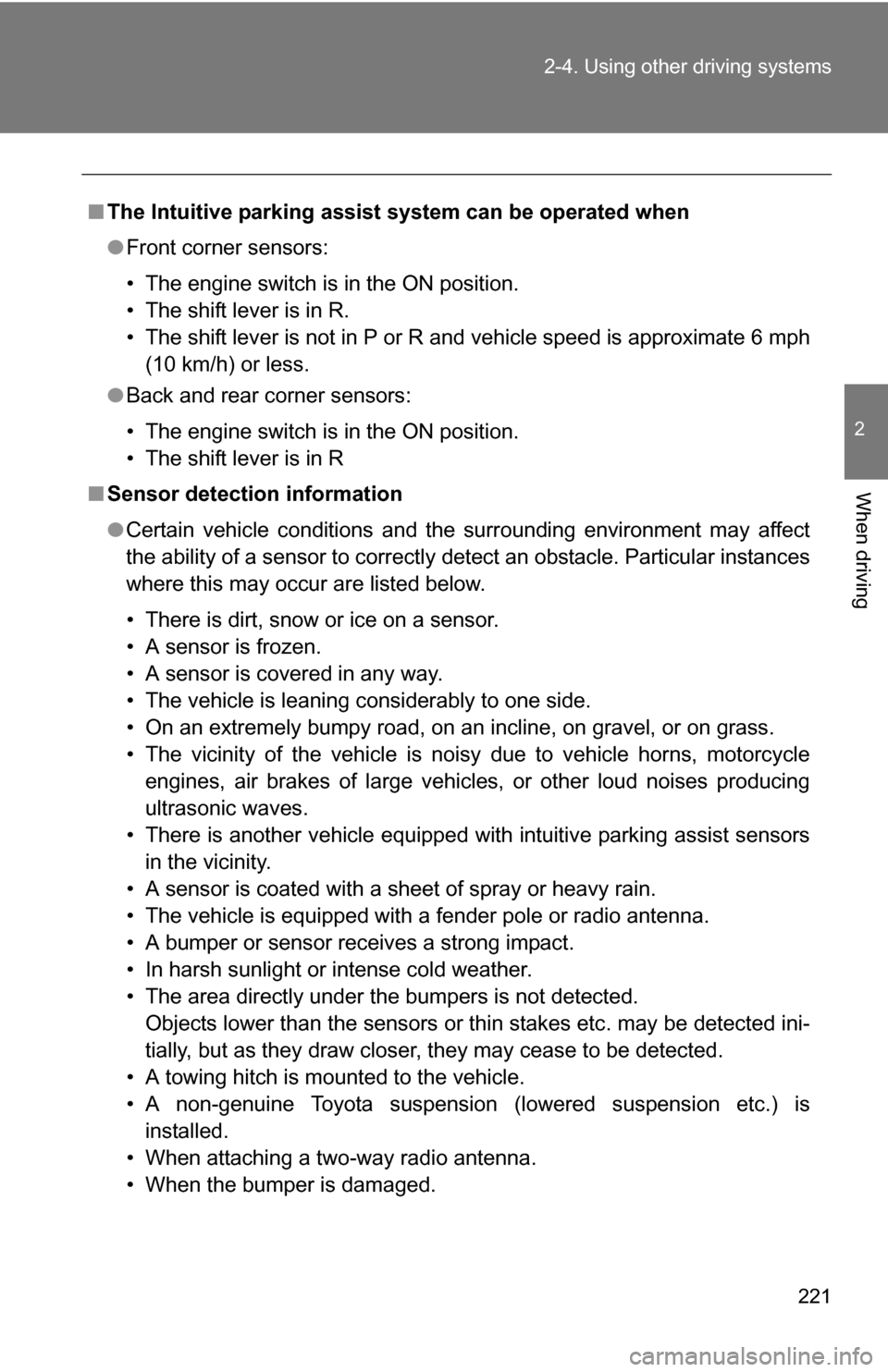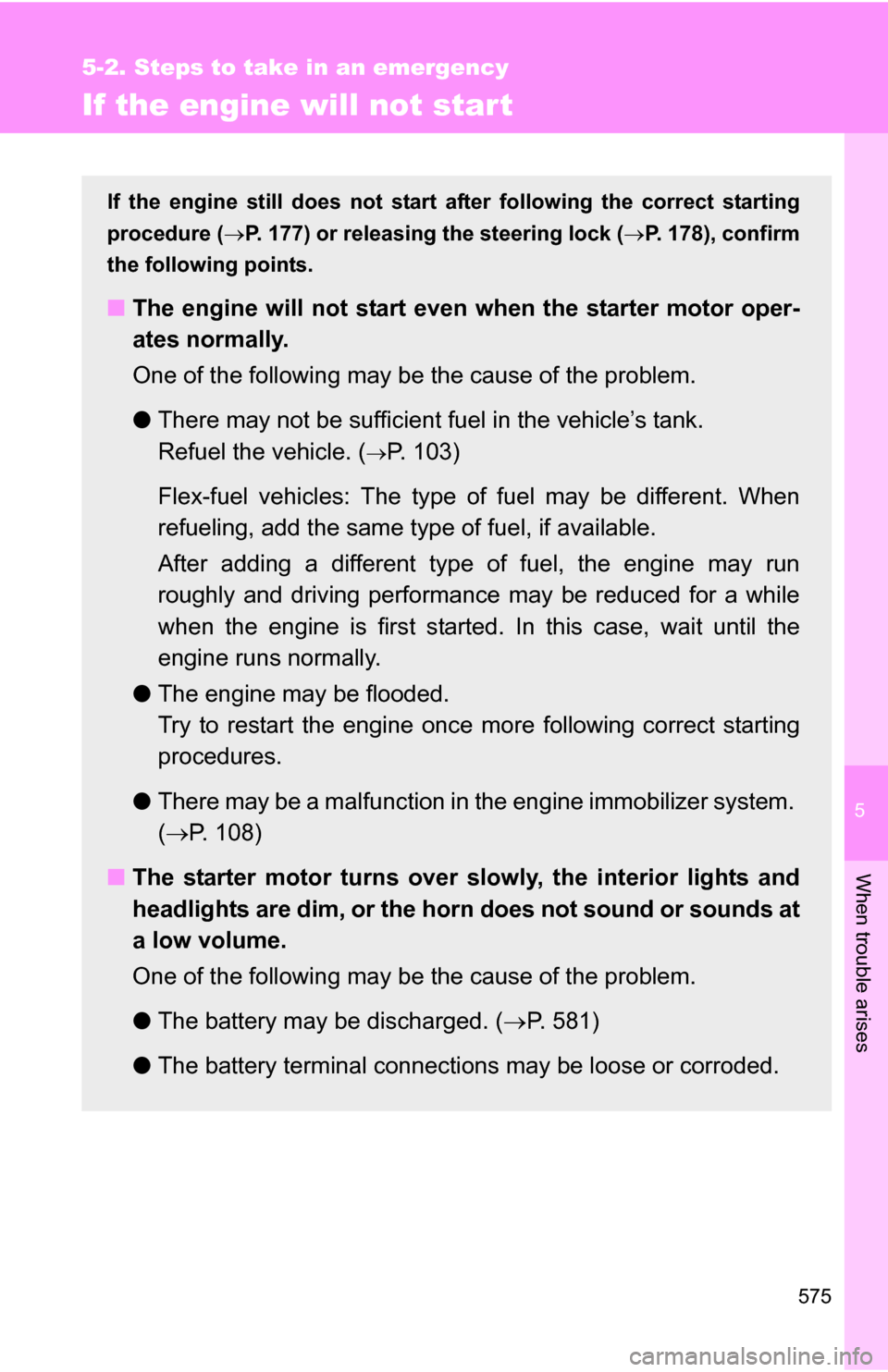Page 2 of 672

TABLE OF CONTENTSIndex
2
1-1. Key information .................. 42Keys ..................................... 42
1-2. Opening, closing and
locking the doors .............. 44
Wireless remote control ....... 44
Side doors ............................ 47
Tailgate ................................ 52
1-3. Adjustable components
(seats, mirrors, steering
wheel) ................................. 58
Front seats ........................... 58
Rear seats (Double Cab and CrewMax models) .............. 63
Driving position memory system ................................ 68
Head restraints ..................... 71
Seat belts ............................. 75
Steering wheel (manually adjustable type) .................. 83
Steering wheel (power-adjustable type)...... 84
Anti-glare inside rear view mirror .................................. 85
Outside rear view mirrors ..... 88
1-4. Opening and clos ing
the windows and
moon roof .......................... 94
Power windows .................... 94
Back window ........................ 96
Power back window (CrewMax models only) ..... 97 Moon roof ............................. 99
1-5. Refueling ........................... 103 Opening the fuel tank cap .................................... 103
1-6. Theft deterrent system ..... 108 Engine immobilizer system .............................. 108
Alarm .................................. 110
Theft prevention labels (U.S.A.)............................. 112
1-7. Safety information ............ 113 Correct driving posture ....... 113
SRS airbags ....................... 115
Front passenger occupant classification system ......... 131
Child restraint systems ....... 138
Installing child restraints ..... 144
2-1. Driving procedures........... 168 Driving the vehicle .............. 168
Engine (ignition) switch....... 177
Automatic transmission ...... 180
Turn signal lever ................. 185
Parking brake ..................... 186
Horn .................................... 187
2-2. Instrument cluster ............ 188 Gauges and meters ............ 188
Indicators and warning lights ................................. 194
Multi-information display ..... 198
1Before driving
2When driving
Page 14 of 672
14
Pictorial indexInterior
Seat belts P. 75
SRS driver airbag P. 115
Head restraints P. 71
SRS side airbags P. 115
Floor mats P. 446
SRS front
passenger
airbag
P. 115
Armrest2 P. 444
Front seats P. 58
Console box P. 401
Rear seats1 P. 63
Glove boxes
P. 400
Front separated type seats
Rear cup holders2
P. 416
Bottle holders P. 417
Horn P. 187
Page 20 of 672
20
Pictorial indexInterior
Seat belts P. 75
SRS driver airbag P. 115
Head restraints P. 71
SRS side airbags P. 115
Floor mats P. 446
SRS front
passenger
airbag
P. 115
Armrest3 P. 444
Front seats P. 58
Rear seats2 P. 63
Glove boxes
P. 400
Front bench type seat
Rear cup holders3
P. 416
Bottle holders P. 417
Horn P. 187
Page 167 of 672

When driving2
167
2-1. Driving procedures ........ 168Driving the vehicle............ 168
Engine (ignition) switch .... 177
Automatic transmission................... 180
Turn signal lever .............. 185
Parking brake ................... 186
Horn ................................. 187
2-2. Instrument cluster.......... 188 Gauges and meters ......... 188
Indicators and warning lights .............................. 194
Multi-information display............................ 198
Accessory meter .............. 204
2-3. Operating the lights and wipers ........................... 207
Headlight switch ............... 207
Fog light switch ................ 210
Windshield wipers and washer ........................... 211 2-4. Using other driving
systems ......................... 214
Cruise control ................... 214
Intuitive parking assist...... 217
Four-wheel drive system ........................... 223
AUTO LSD system........... 227
Driving assist systems ..... 230
2-5. Driving information ........ 236 Off-road precautions ........ 236
Cargo and luggage .......... 241
Vehicle load limits ............ 244
Winter driving tips ............ 246
Trailer towing ................... 250
Dinghy towing .................. 272
Page 187 of 672
187
2-1. Driving procedures
2
When driving
Hor n
■After adjusting the steering wh eel (manually adjustable type)
Make sure that the steering wheel is securely locked.
The horn may not sound if the steering wheel is not securely locked.
( P. 83)
To sound the horn, press on or
close to the mark.
Page 221 of 672

221
2-4. Using other
driving systems
2
When driving
■The Intuitive parking assist system can be operated when
●Front corner sensors:
• The engine switch is in the ON position.
• The shift lever is in R.
• The shift lever is not in P or R and vehicle speed is approximate 6 mph
(10 km/h) or less.
● Back and rear corner sensors:
• The engine switch is in the ON position.
• The shift lever is in R
■ Sensor detection information
●Certain vehicle conditions and the surrounding environment may affect
the ability of a sensor to correctly detect an obstacle. Particular instances
where this may occur are listed below.
• There is dirt, snow or ice on a sensor.
• A sensor is frozen.
• A sensor is covered in any way.
• The vehicle is leaning considerably to one side.
• On an extremely bumpy road, on an incline, on gravel, or on grass.
• The vicinity of the vehicle is noisy due to vehicle horns, motorcycle
engines, air brakes of large vehicles, or other loud noises producing
ultrasonic waves.
• There is another vehicle equipped with intuitive parking assist sensors in the vicinity.
• A sensor is coated with a sheet of spray or heavy rain.
• The vehicle is equipped with a fender pole or radio antenna.
• A bumper or sensor receives a strong impact.
• In harsh sunlight or intense cold weather.
• The area directly under the bumpers is not detected. Objects lower than the sensors or thin stakes etc. may be detected ini-
tially, but as they draw closer, they may cease to be detected.
• A towing hitch is mounted to the vehicle.
• A non-genuine Toyota suspension (lowered suspension etc.) is installed.
• When attaching a two-way radio antenna.
• When the bumper is damaged.
Page 515 of 672
515
4-3. Do-it-yourself maintenance
4
Maintenance and care
Fuse layout and amperage ratings
■ Engine compartment
FuseAmpereCircuit
1 A/F 15 A Multiport fuel injection system/
sequential multiport fuel injection
system
2 HORN 10 A Horn
3 EFI NO.1 25 A Multiport fuel injection system/
sequential multiport fuel injection
system
4 IG2 MAIN 30 A INJ, MET, IGN fuses
5 DEICER 20 A Front windshield wiper de-icer
6 TOW TAIL 30 A Trailer lights (tail lights)
7 POWER NO.2 30 A Power back windows
8 FOG 15 A Front fog lights
Page 575 of 672

5
When trouble arises
575
5-2. Steps to take in an emergency
If the engine will not star t
If the engine still does not start after following the correct starting
procedure ( P. 177) or releasing the steering lock (P. 178), confirm
the following points.
■ The engine will not start even when the starter motor oper-
ates normally.
One of the following may be the cause of the problem.
●There may not be sufficient fuel in the vehicle’s tank.
Refuel the vehicle. (
P. 103)
Flex-fuel vehicles: The type of fuel may be different. When
refueling, add the same type of fuel, if available.
After adding a different type of fuel, the engine may run
roughly and driving performance may be reduced for a while
when the engine is first started. In this case, wait until the
engine runs normally.
● The engine may be flooded.
Try to restart the engine once more following correct starting
procedures.
● There may be a malfunction in the engine immobilizer system.
( P. 108)
■ The starter motor turns over slowly, the interior lights and
headlights are dim, or the horn does not sound or sounds at
a low volume.
One of the following may be the cause of the problem.
●The battery may be discharged. ( P. 581)
● The battery terminal connec tions may be loose or corroded.